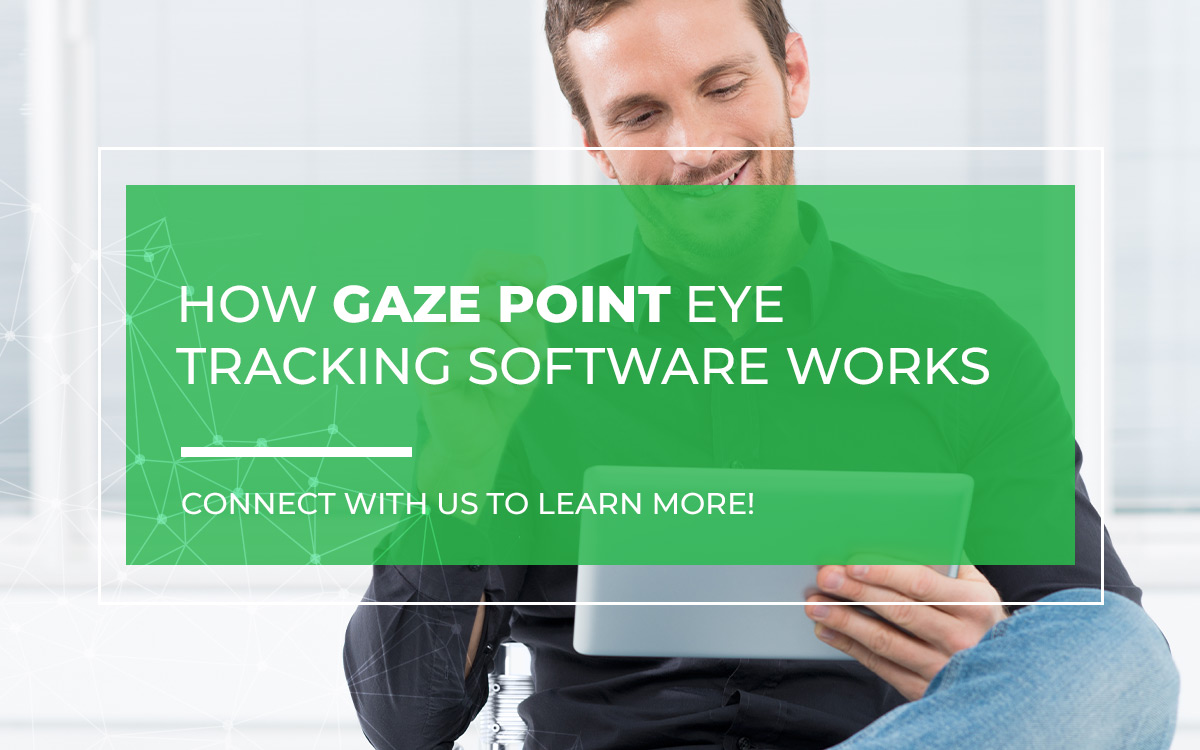
How Gaze Point Eye Tracking Software Works
Eye tracking, also known as gaze interaction, is a technology used in research to see where someone is looking on a computer screen. Sometimes, it’s used as a substitute for conventional mice and keyboards.
It’s a technology that enables people with mental and physical deformities to enjoy more prosperous and independent lives. Gaze Point has advanced eye-tracking software and equipment for comprehensive and professional eye-tracking, providing these services and softwares across the country.
The Basics of Eye-Tracking Software
As mentioned, eye tracking is when intelligent computerized devices are operated to measure where we look. During eye-tracking, the gaze point is measured by directing an infrared-like light into the eye pupil and the entire cornea.
The reflections are the vector in which the cornea and the pupil relate and are tracked using the infrared camera. The process of monitoring optical reflections of the cornea is called the pupil center corneal reflection (PCCR).
Through filtering and many calculations, the machines are then able to detect where you are looking. Infrared light sources, which are the primary detection methods, are necessary because the gaze’s accuracy depends on the pupil’s clear demarcation and the recognition of your corneal reflection.
Thus, normal light sources with ordinary cameras may find it challenging to track and provide the required contrast. The accuracy necessary may therefore be problematic to attain in short of an infrared light source.

Major Types of Eye-Tracking Devices
While the market has several different eye-tracking devices and software, eye research principally depends on two types. These are screen-based and glass eye trackers. Both are used in various research areas, but their utility and the data they collect differ.
-
Screen-Based Eye Trackers (remote)
These trackers require the respondent to be in front of a monitor screen to interact with content on a screen. Although screen-based trackers have a limited monitoring range, they still provide enough freedom of eye movements for the respondents to remain unrestricted.
Some key takeaways from our remote eye tracker software are that they capture eye movements from a distance and are attached close or below the screen. The respondent also sits close to the screen in the absence of any attachments.
Additionally, screen-based eye trackers are recommended for eye observations of any screen-based spur content, mostly in lab settings, like pictures, videos, and web content. They are also used for offline stimuli like books and magazines.
-
Eye-Tracking Glasses (mobile)
They are also called head-mounted trackers, are attached near the eyes, and are mostly fitted on eyeglass frames. With these, the respondent can move freely.
This is clearly a plus, given that your research design needs tasks that must be completed in a natural environment. Their downside is that glasses can shift if too much movement is involved during the recording, for example, in sports.
Key takeaways here are that they track eye activity at close range, are fixed on lightweight glass mounts, and the respondent can easily move with them on. They are also recommended for use when there is much recording in a real-life event or virtual environments like product testing and utility studies.

Better Accuracy Requires Eye-Tracking Software Calibration
For accurate results, the eye tracker software must gather enough detail about your eyes. For this reason, calibration is necessary.
Calibration means that the eye-tracking software must measure your eye’s ability to reflect light. To measure calibration, your eye needs to follow a particular point, a video or graphic element that’s passing across a screen, both in remote and mobile eye-tracking techniques.
We then use the calibration data together with your eye’s unique 3D model to generate an optimized tracking experience.

How Do You Click?
While using a Gaze Point interaction, clicking can be done in three ways. In fact, the method available strictly depends on the eye-tracking software used. Also, clicking depends on the user’s abilities. These are as follows:
- Blink – Blinking is a possible way to use for clicking. However, it’s not considered the best way because the respondent might lose focus on the point they were looking at.
- Dwell – Here, to complete a click, users must focus their eyes on a specific point in the screen for a preset duration of milliseconds, then the eye tracking device performs a click.
- Switch – If the respondent can control a switch, this is often the quickest and most effective way to perform a click during eye-tracking. The respondent uses their gaze point to select the point they want to click, then press a switch to achieve it.

Currently, there is a clear understanding of how eye-tracking devices and software work, at least basically, although much has to be learned concerning the topic.
While it might seem strange for first-timers, eye tracking is a simple concept that’s easily achieved when the right equipment is used, and Gaze Point has all that you need in this area. Contact our support service team today for any assistance, or visit our website for up-to-date eye-tracking devices.



